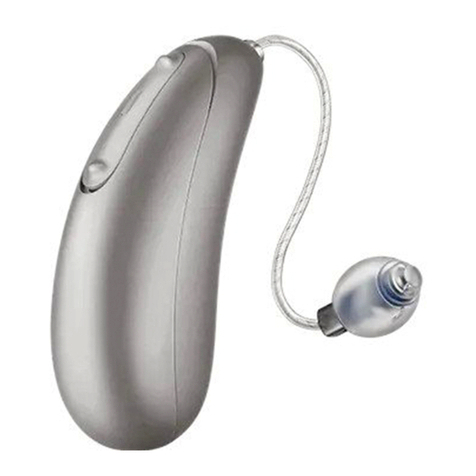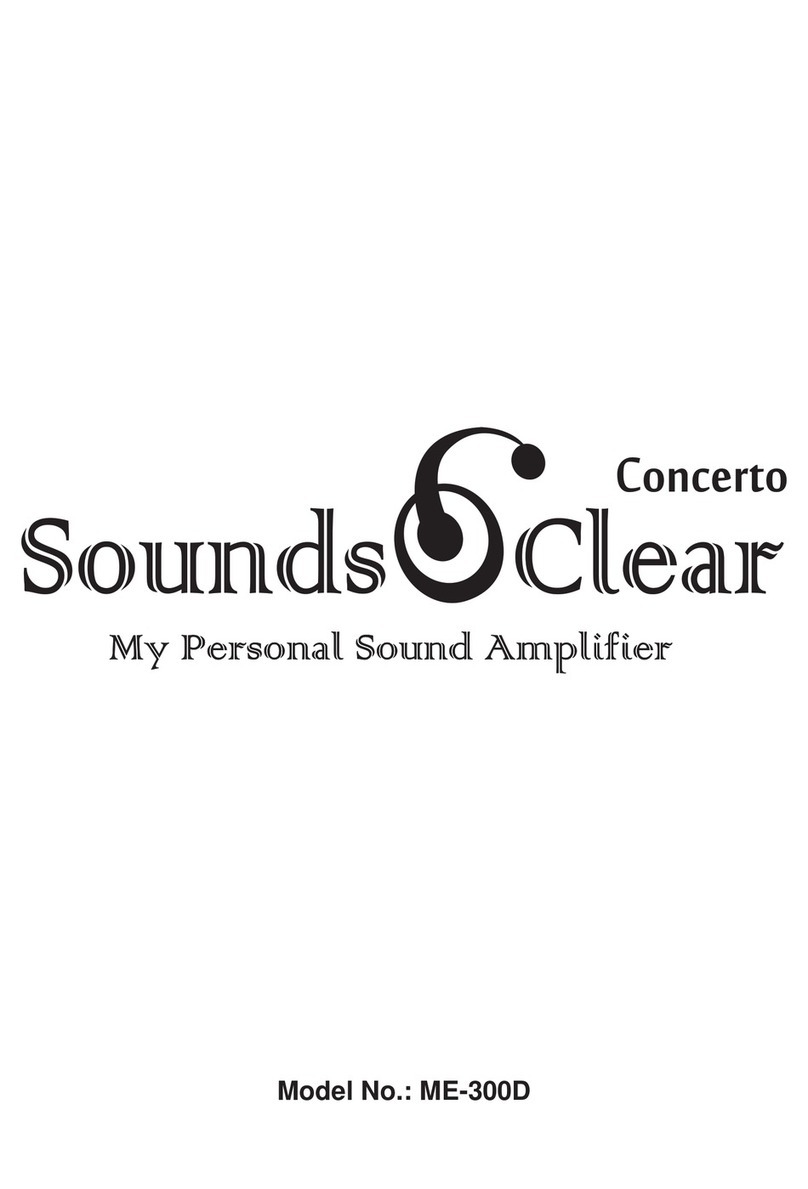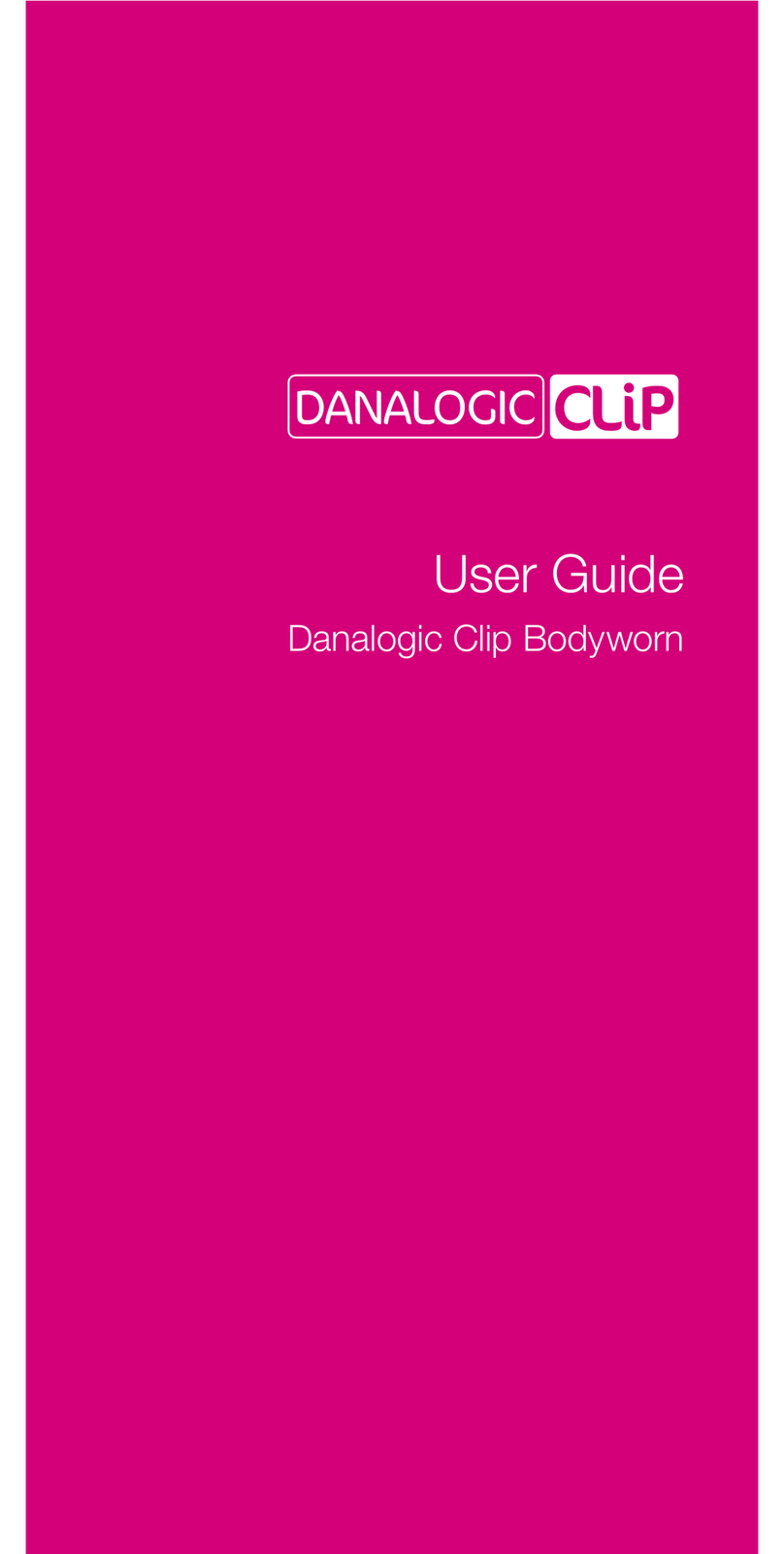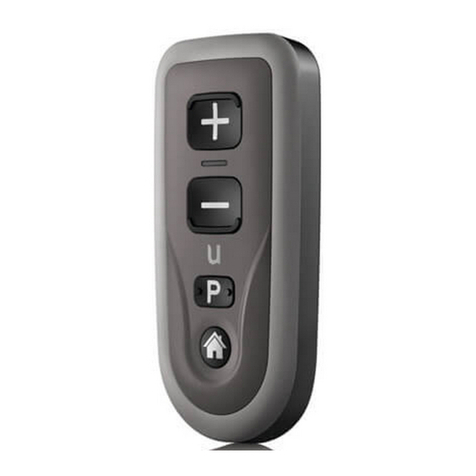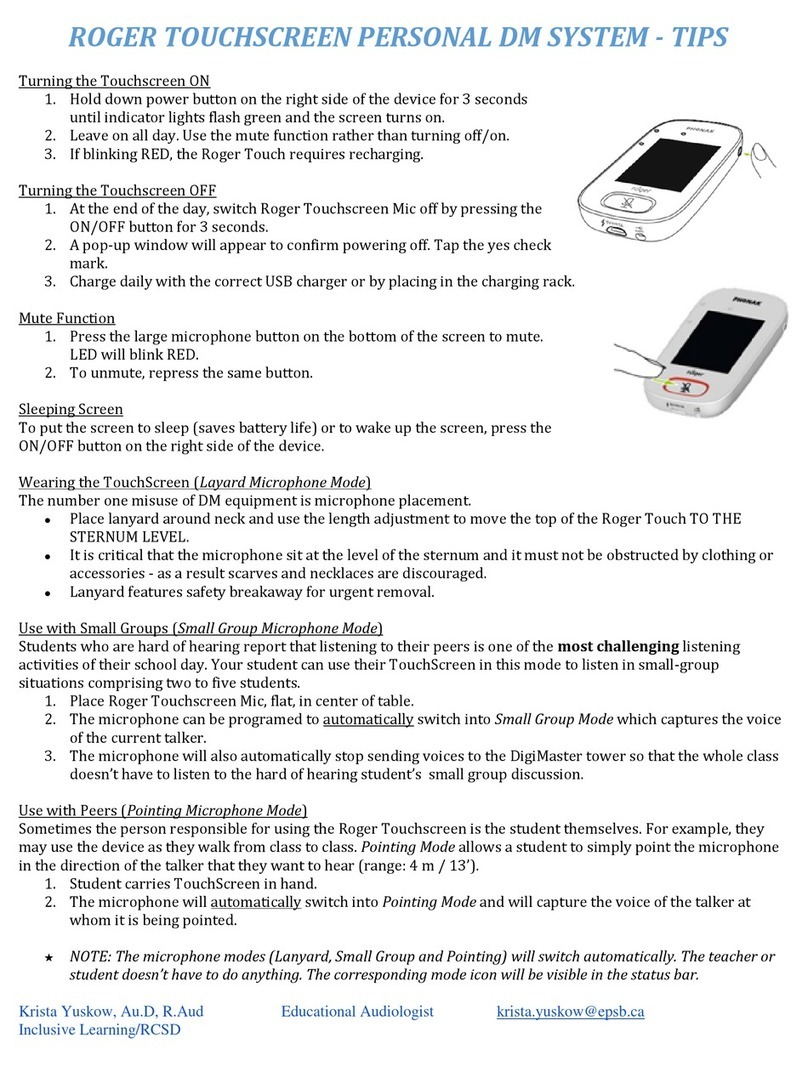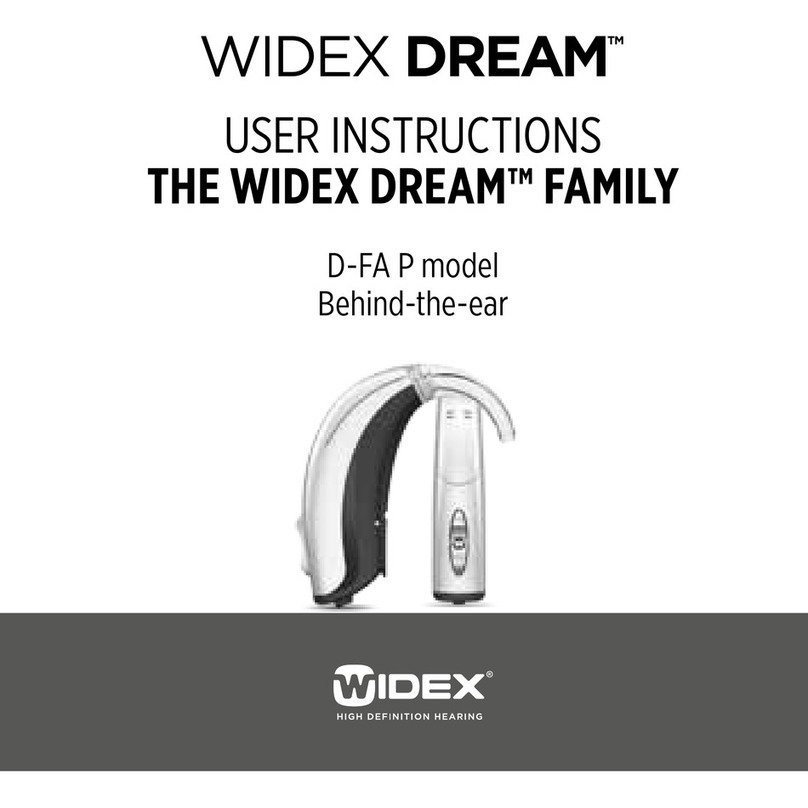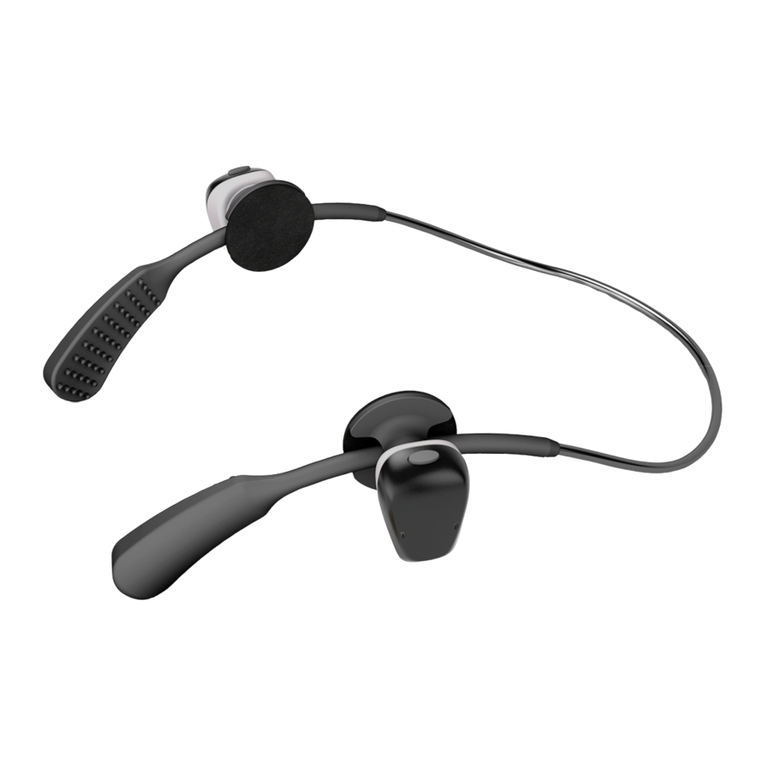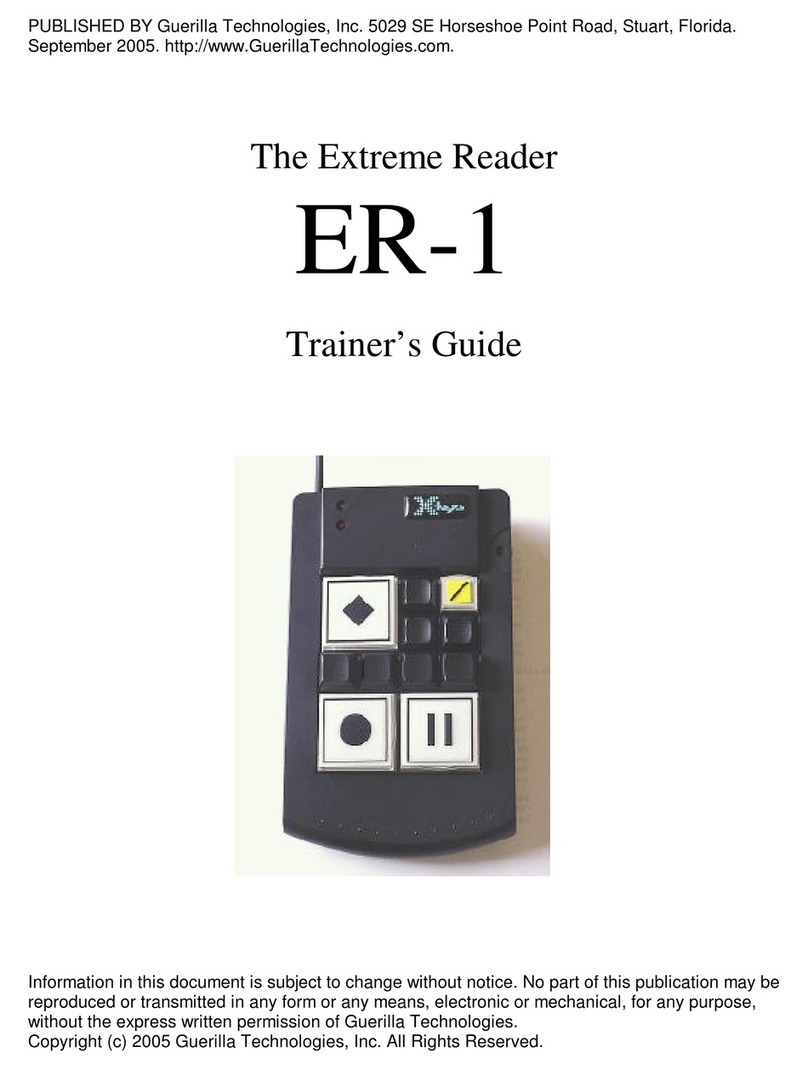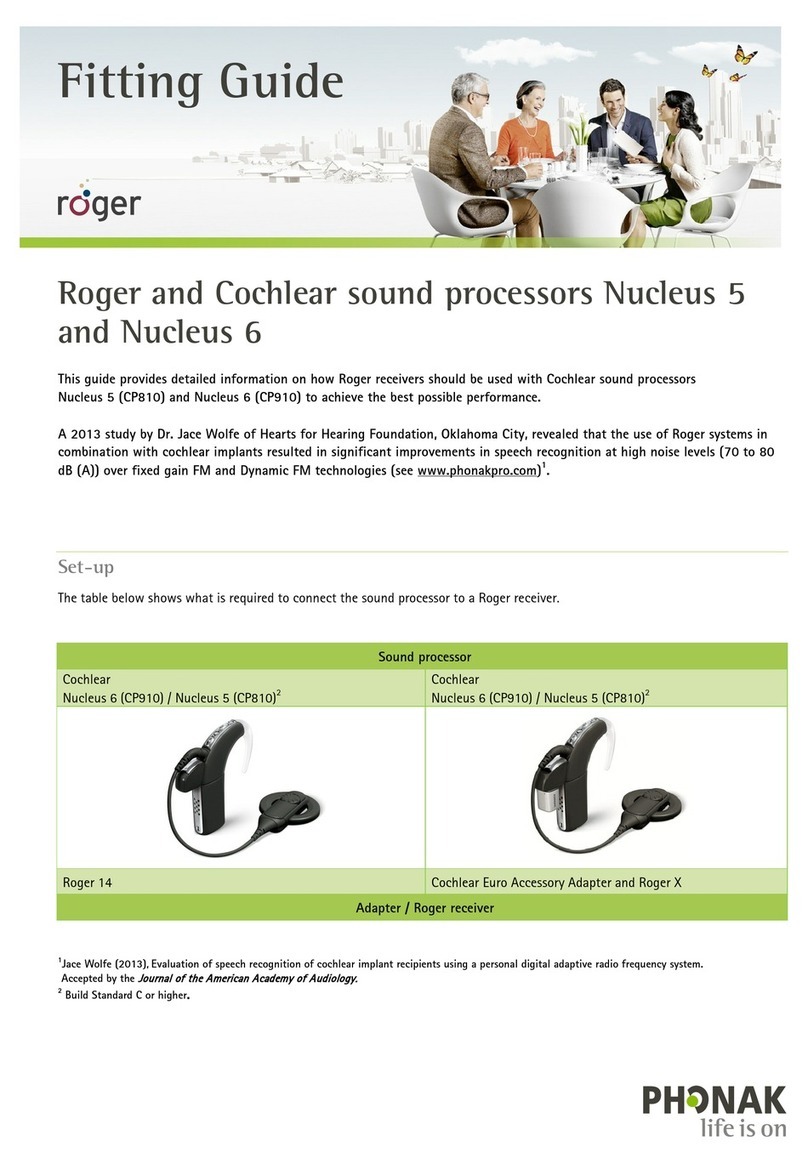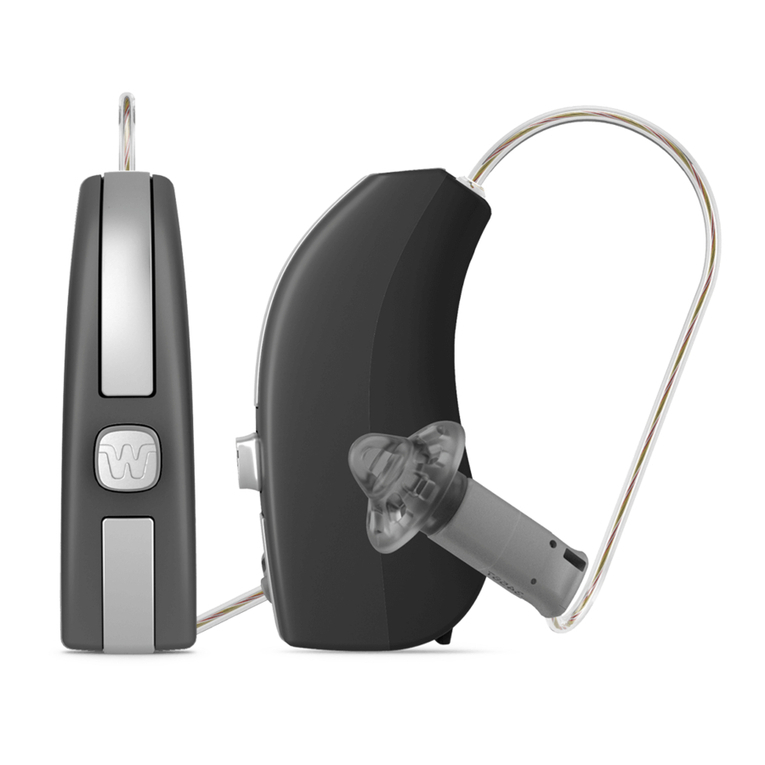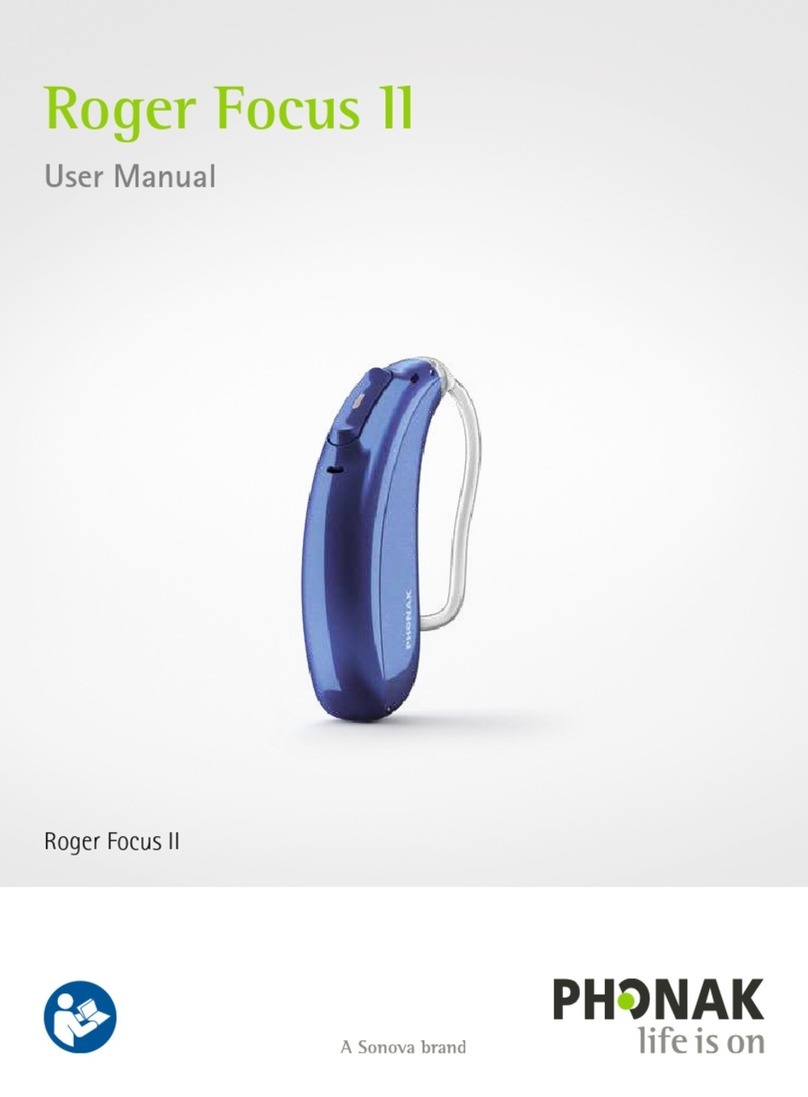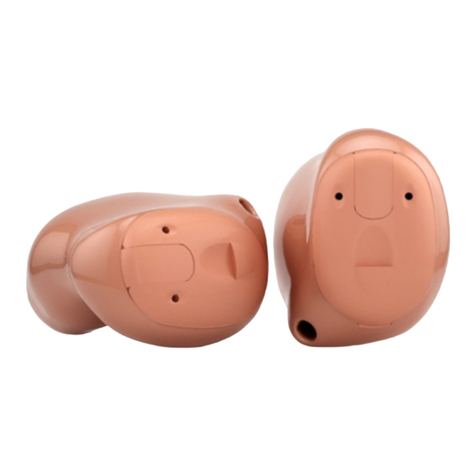0000161244000001
0543
Avoiding heat, humidity
and chemicals
Your hearing instrument must never be exposed to extreme
heat e.g. left inside a parked car in the sun. They must never
be exposed to a lot of moisture e.g. steam baths, showers or
heavy rain. Nor must they be dried in microwave ovens or
other ovens.
Wipe the batteries carefully if moisture is present as it may
affect their performance. Using an anti-humidity kit can help
to avoid these problems and may even extend the life of your
hearing instrument. Consult your Hearing Care Professional
for further advice.
The chemicals in cosmetics, hairspray, perfume, aftershave
lotion, suntan lotion and insect repellant can damage your
hearing instrument. You should always remove your hearing
instrument before applying such products and allow time for
the product to dry before refitting your hearing instrument. If
you use lotion, be sure to wipe your hands dry before putting
on your hearing instrument.
Waste from electronic
equipment must be
handled according to
local regulations.
International Warranty
Your hearing instruments are covered by a limited warranty
issued by the manufacturer for a period of 12 months from
the date of delivery. This limited warranty covers manufactur-
ing and material defects in the hearing instrument itself, but
not accessories such as batteries, tubing, ear wax filters etc.
Problems arising from improper handling or care, excessive
use, accidents, repairs made by an unauthorized party,
exposure to corrosive conditions, physical changes in your
ear, damage due to foreign objects entering the device, or
incorrect adjustments are NOT covered by the limited
warranty and may void it.
The above warranty does not affect any legal rights that you
might have under applicable national legislation governing
sale of consumer goods. Your Hearing Care Professional may
have issued a warranty that goes beyond the clauses of this
limited warranty. Please consult him/her for further
information.
If you need service
Take your hearing instrument to your Hearing Care Professional,
who may well be able to sort out minor problems and
adjustments on the spot.
Oticon declares that this hearing instrument is in compliance
with the essential requirements and other relevant provisions
of Directive 1999/5/EC.
Declaration of Conformity is available at the manufacturer:
Manufactured by:
Oticon A/S
Kongebakken 9
DK-2765 Smørum
Denmark
www.oticon.com
Usage of hearing instruments
• Hearing instruments should be used only as directed and
adjusted by your Hearing Care Professional. Misuse can
result in sudden and permanent hearing loss.
• Never allow others to wear your hearing instrument as
incorrect usage could cause permanent damage to their
hearing.
Choking hazards
• Hearing instruments, their parts, and batteries are not toys and
should be kept out of reach of children and anyone who might
swallow these items or otherwise cause injury to themselves.
• Never replace the battery or adjust the controls of the
hearing instrument in front of infants, small children or
people with learning diculties.
• Discard batteries carefully in a place where infants, small
children or people with learning diculties cannot reach
them.
• Batteries have occasionally been mistaken for pills. Therefore
check your medicine carefully before swallowing any pills.
• Never put your hearing instrument or batteries in your mouth
for any reason, as they are slippery and could be swallowed
by accident.
• Most hearing instruments can be supplied with a tamper-
resistant battery compartment upon request. This is
strongly recommended for infants, small children, and
people with learning diculties.
If a battery or hearing instrument is swallowed, see a doctor
immediately.
Battery use
• Always use batteries recommended by your Hearing Care
Professional. Batteries of low quality may leak and cause
bodily harm.
• Never attempt to recharge your batteries. They may
explode and cause serious injury.
• Never dispose of batteries by burning them. There is a risk
that they will explode and cause serious injury.
Dysfunction in hearing instruments
• Hearing instruments may stop functioning, for instance if
the batteries have expired or if the speaker is blocked by
moisture or ear wax. You should be aware of this possibility,
in particular when you are in trac or otherwise dependent
on warning sounds.
Active implants
• If you wear an active implant, then keep the hearing
instrument more than 15 cm away from the implant e.g.
do not carry them in a breast pocket.
• If you have an active brain implant, please contact the
manufacturer of your implantable device for information
about the risk of disturbance.
Explosives
• The power source in your hearing instrument has
insucient energy to cause re in normal conditions of use.
The hearing instrument has not been tested for compliance
with international standards concerning explosive
atmospheres. It is recommended not to use your hearing
instrument in areas where there is a danger of explosions.
X-ray, CT, MR, PET scanning and
electrotherapy
• Remove your hearing instrument for example during X-ray,
CT / MR / PET scanning electrotherapy or surgery as your
hearing instrument may be damaged when exposed to
strong elds.
Power instrument
• Special care should be exercised in selecting, tting
and using a hearing instrument where maximum sound
pressure capability exceeds 132 dB SPL (IEC 711), as there
may be risk of impairing the remaining hearing of the
hearing instrument user.
Possible side eects
• Hearing instruments, moulds or domes may cause an
accelerated accumulation of ear wax.
• The otherwise non-allergenic materials used in hearing
instruments may in rare cases cause a skin irritation or any
other unusual condition.
Please seek consultation with a physician if these conditions occur.
Interference
• Your hearing instrument has been thoroughly tested for
inter-ference, according to the most stringent international
standards. However, interference with your hearing instru-
ment and other devices may occur, for example for some
mobile telephones, citizens band devices and shop alarm
systems. If this occur increase the distance between the
hearing instrument and the device.
IMPORTANT NOTICE
Please familiarise yourself with the following general
warnings and both this User Guide and the Instruction for
use before using your hearing instrument. It contains
instructions and important information about the use and
handling of your hearing instrument and batteries.
CAUTION
Sumo DM is a powerful hearing instrument. Never allow
others to wear your hearing instruments, as incorrect or
wrongful usage could cause permanent damage to their
hearing.
161244UK / 05.15
BTE
INSTRUCTIONS FOR USE
SUMO DM
Warnings Warnings
Indications for Use
The hearing instrument is intended to amplify and transmit
sound to the ear and thereby compensate for profound
impaired hearing.


